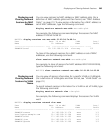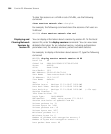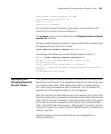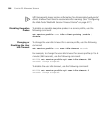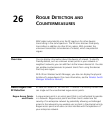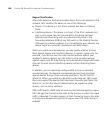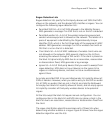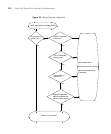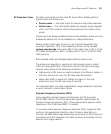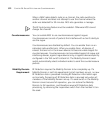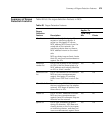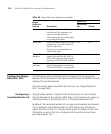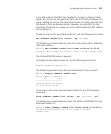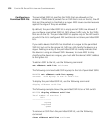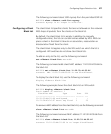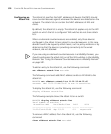About Rogues and RF Detection 571
RF Detection Scans All radios continually scan for other RF transmitters. Radios perform
passive scans and active scans:
Passive scans — The radio listens for beacons and probe responses.
Active scans — The radio sends probe any requests (probe requests
with a null SSID name) to solicit probe responses from other access
points.
Passive scans are always enabled and cannot be disabled. Active scans are
enabled by default but can be disabled on a radio-profile basis.
Radios perform both types of scans on all channels allowed for the
country of operation. (This is the regulatory domain set by the set
system countrycode command.) 802.11b/g radios scan in the 2.4 GHz
to 2.4835 GHz spectrum. 802.11a radios scan in the 5.15 GHz to 5.85
GHz spectrum.
Both enabled radios and disabled radios perform these scans.
The active-scan algorithm is sensitive to high-priority (voice or video)
traffic or heavy data traffic. Active-scan scans for 30 msec once every
second, unless either of the following conditions is true:
High-priority traffic (voice or video) is present at 64 Kbps or higher. In
this case, active-scan scans for 30 msec every 60 seconds.
Heavy data traffic is present at 4 Mbps or higher. In this case,
active-scan scans for 30 msec every 5 seconds.
On a disabled radio, the radio is dedicated to rogue detection and scans
on each channel in round-robin fashion.
Dynamic Frequency Selection (DFS)
Some regulatory domains require conformance to ETSI document
EN 301 893. Section 4.6 of that document specifies requirements for
Dynamic Frequency Selection (DFS). These requirements apply to radios
operating in the 5 GHz band (802.11a radios).
In countries where Dynamic Frequency Selection (DFS) is required, MSS
performs the appropriate check for radar. If radar is detected on a
channel, the MAP radio stops performing active scans on that channel in
accordance with DFS. However, the radio continues to passively scan for
beacons from rogue devices.



